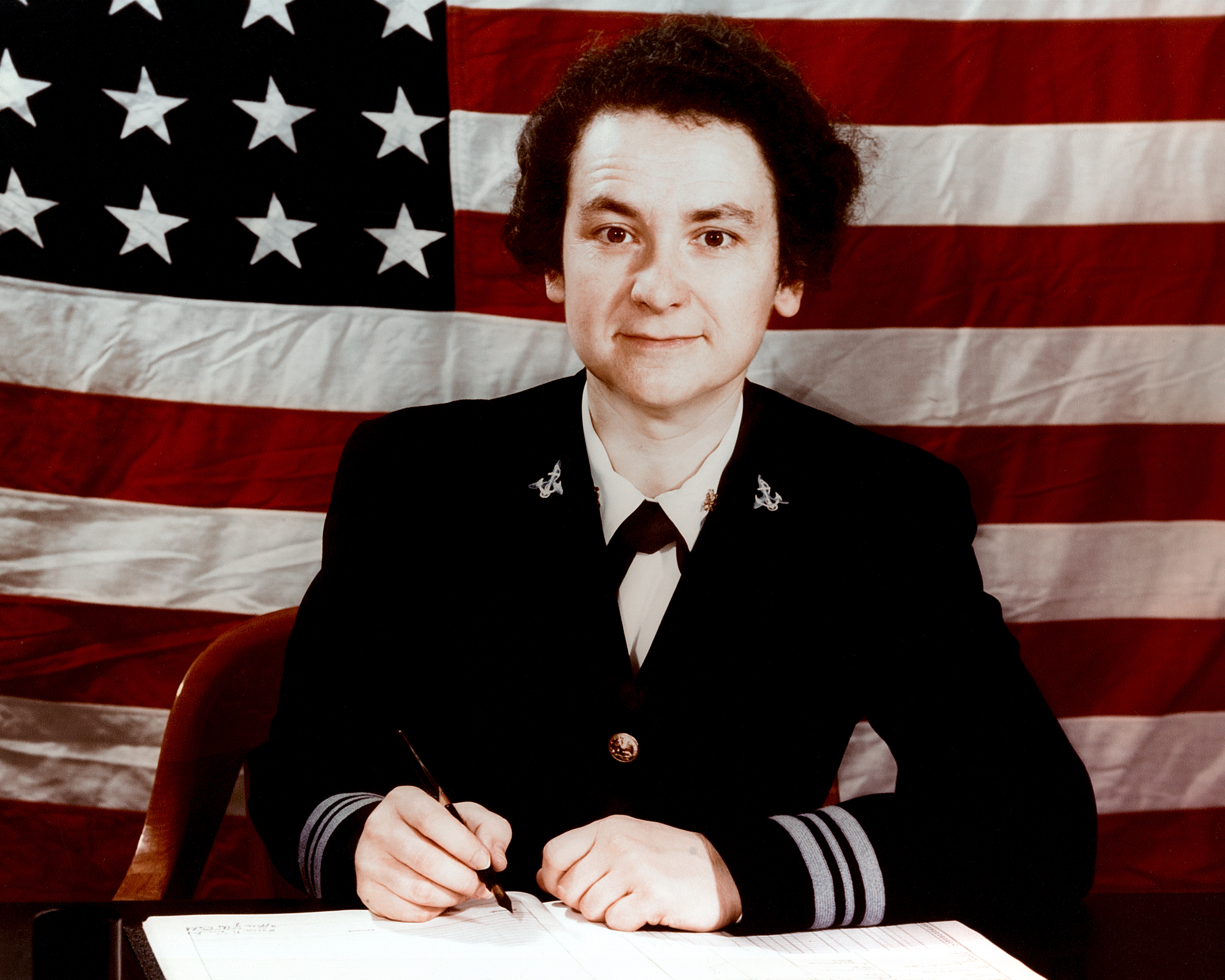Hello all,
Wow, is it really February already? I'm OK with that because it means spring is just around the corner, and I'm ready for some warmer weather. One of the things I mentioned in my last post, one of the things all be working on in 2018 is sharing more information about the WAVES during WWII.This is the first of several planned posts. To start, I thought I would give a brief overview of the WAVES and some basic facts. Later on I will have some more in-depth posts that discuss uniforms, various jobs, personal experiences of WAVES as well as what it is like to be a WAVES reenactor. I will be teaming up with my friend Sara from the Canteen Cowboy on some of these. I hope you will follow along!
 |
 |
| LCDR McAfee while director of the WAVES - Source |
The Women's
Reserve of the Coast Guard (SPARS) was created on Nov. 23, 1942 "to
expedite the war effort by providing for releasing officers and men for duty at
sea and their replacement by women in the shore establishment of the Coast
Guard". The first 153 enlisted SPARs and 15 SPAR officers were former
WAVES who agreed to be discharged from the Navy and join the Coast Guard.
WAVES and SPARS
duties were restricted to the continental U.S. until late in 1944, when
overseas service was finally authorized for the WAVES. Even then the WAVES were
restricted to the U.S. territories of Alaska and Hawaii. While many WAVES
filled traditionally female secretarial and clerical jobs, thousands more
served pushed the gender barrier and took on duties in the aviation community,
Judge Advocate General Corps, medical professions, communications,
intelligence, science and technology. Aviation Machinist's Mates,
Aviation Metalsmiths, Control Tower Operators, Aerographer's Mates, Link
Trainer Instructors, and Parachute Riggers are just a few of the duties
performed by WAVES during the war.
At the end of
World War II, there were over 8,000 female officers and as many as 80,000
enlisted WAVES, equaling roughly 2-1/2 percent of the Navy's total strength.
Fast Facts
- In August 1942, Mildred McAfee, was sworn in as a Naval Reserve Lt. Commander, becoming the first woman commissioned as an officer of the U.S. Navy.
- Within the first year, over 27,000 women joined the WAVES.
- The notable New York fashion house, Mainbocher, designed the WAVES uniforms. The design services were secured through the efforts of Mrs. James V. Forrestal, wife of the Assistant Secretary of the Navy.
- By mid-1944, the WAVES began accepting African-American women. Harriet Ida Pickens and Frances Wills became the Navy's first, and only, African-American WAVES officers in December 1944. Approximately one in every 36 women who enlisted and trained for the WAVES was an African-American.
- As many as a third of all WAVES were assigned to naval aviation. These women fixed aircraft, packed parachutes, provided weather information, served as link trainer instructors, gunnery instructors, coordinated air traffic from control towers and a performed host of other aviation-related jobs.
- By 1945, enlisted women could choose from a total of 38 different ratings in the Navy. Almost every shore establishment had WAVES on active duty fulfilling necessary military work of every kind, from general office workers and supply accounts specialists to film projectionists and drivers to dental prosthetic technicians. At the Navy Department headquarters in Washington, D.C., over half of all service personnel were WAVES. Approximately 70 percent of the Bureau of Naval Personnel was composed of WAVES. Large numbers of WAVES were assigned to the Hospital Corps where they participated in Navy recovery, therapy and rehabilitation programs.
- By the end of World War II, the WAVES consisted of 8,000 female officers and close to 80,000 enlisted women.
- By September of 1946, the majority of WAVES were either discharged or released to inactive duty.
- Despite their involvement in World War II and post-war, the organization was disbanded in 1948 when the Women’s Armed Services Integration Act was passed. This new law permitted women permanent status within the armed forces. Despite this change, the acronym WAVES continued to be used for almost 30 more years.


No comments:
Post a Comment